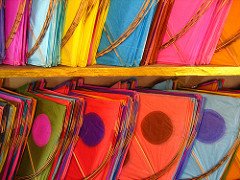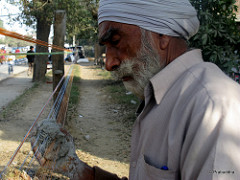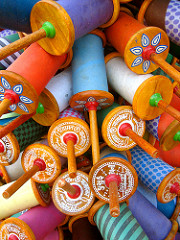Uttarayan and the Kite Festival Posted by Nitya on Jan 22, 2018 in Hindi Language
Indians are celebrating a festival त्यौहार (tyauhaar) pretty much every month in the year. January is the the time of the harvest festival Pongal in South India. In Maharashtra and parts of Western India, the same day heralds Makar Sankranti मकर संक्रांती, while different parts of North India welcomes this festival as Lohri लोड़ी and Baisakhi बैसाखी, among other harvest celebrations.
In Gujarat मकर संक्रांती is also the time when Uttarayan उत्तरायण is celebrated. This observance marks the passing of winter सर्दी (sardi) and heralds summer गर्मी (garmi). Kite पतंग (patang) flying is the most-awaited and noted festivity during उत्तरायण that grips Gujarat leading up to the 14th of January every year. [It is important to note here that kite festivals are popular and eagerly awaited around the country, and it is common to see the January skies dotted with kites in more than one town across India.]
Basic Anatomy of an Indian Kite
पतंग (patang) = kite
मांझा (maanjha) = thread/string connects the kite to the spool
फिरकी (firki) = the spool that holds enough string for the kite to fly high
In order to heighten the competitive edge, the मांझा is often coated with paste mixed with powdered glass, that enables the enemy/competing kite to be smoothly sliced out of the way. This has proven to be dangerous and in some cases even fatal, hence extreme caution has been advised in this aspect of the competition.You can read more about the Anatomy of an Indian Kite in this blog by Akshay Mahajan.
For more on kite festivals in India, check out some nicely illustrated blogs/articles here:
2. Uttarayan, the Kite Festival of Gujarat published on ThoughtCo.

Keep learning Hindi with us!
Build vocabulary, practice pronunciation, and more with Transparent Language Online. Available anytime, anywhere, on any device.
Share this:






